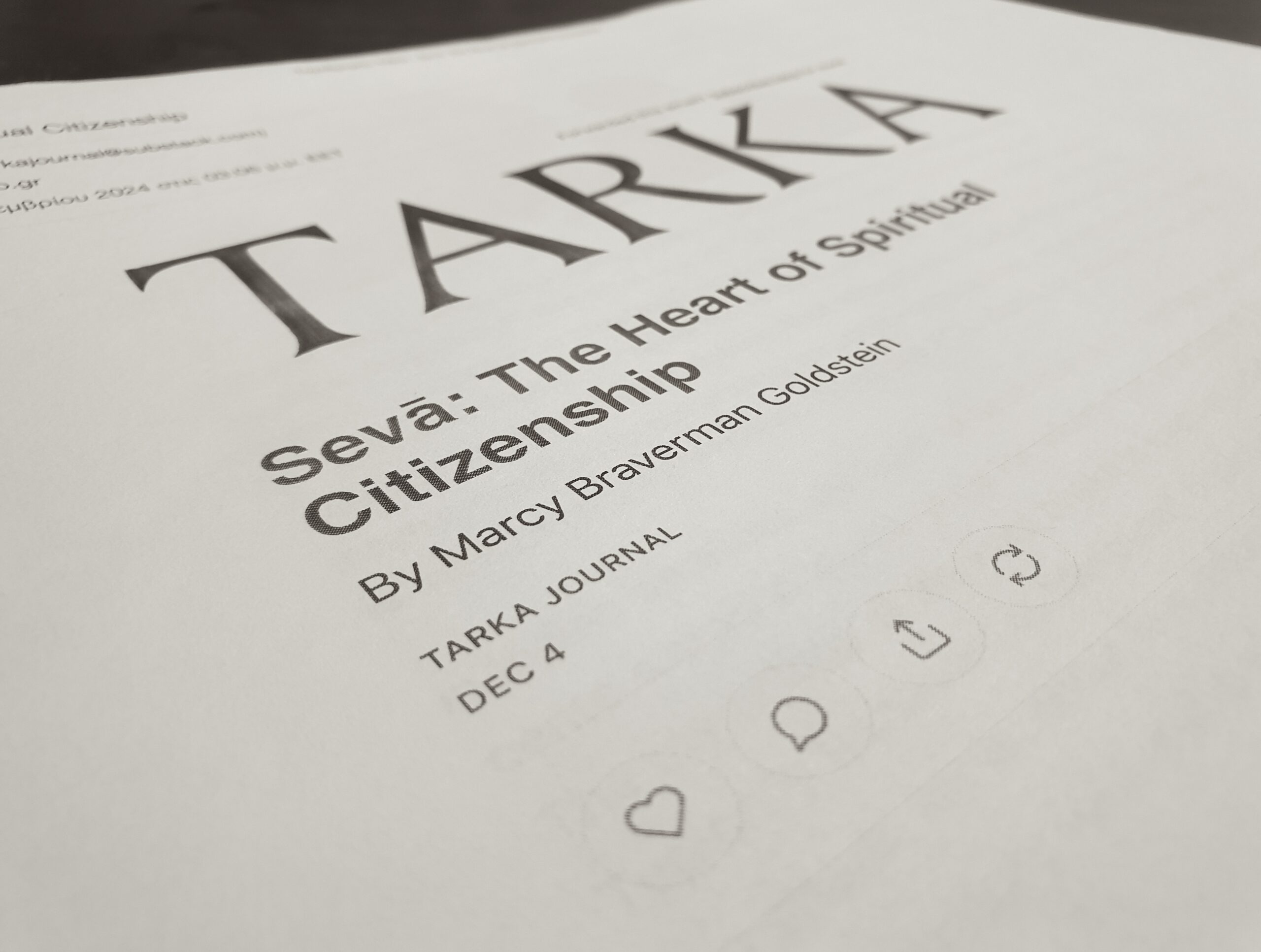On Well-being
February 5, 2025

Thoughts on the article titled “Sevā: The Heart of Spiritual Citizenship” by Marcy Braverman Goldstein in Tarka Journal.
We say, read, hear, and chant, *“May all people be happy ~ Lokāḥ samastāḥ sukhino bhavantu!” But what are we doing to make it happen? …Are we devotedly working for the well-being of humanity, remembering that actions ricochet off one another in an endless dynamic that affects each person? … What are YOU doing for people, now (atha)?
Reading these words of Goldstein, even if you have chant the above mantra in a yoga class just once, it is inevitable, I think, not to ask yourself the following question: Am I doing really something for the happiness I speak about, which is not only mine but involves all the world, or am I merely uttering empty words that, having no real “weight”, vanish into the thin air the moment they come out of my mouth?
By chanting the mantra “lokāḥ samastāḥ sukhino bhavantu” you are making, maybe unconsciously at first, a very important statement to yourself. You are declaring that collective well-being is not exclusive a call made by romantics who want to live in some dream of theirs for the world or by those activists who want to protest against an unjust and inhospitable world. It concerns every person.
Each of us must work for the other. State cohesion relies largely on the principle of offering and service to the whole. The state is a “living organism” whose existence is ensured by each citizen through work relations which are based on mutual respect and common progress. And correspondingly, the state must take care of each of its “workers”.
Regardless of how efficiently this “give and take” works, how have we truly learned to prosper? Is well-being, in reality, such a huge personal bet that leaves no room for the thought of collectivity in our minds other than a mere obligation? The well-being of others, many of us have learned, must be “paid” with the same strict regularity that we must pay the money to pay a household bill.
It is extremely difficult for us to understand how in serving other people we are first and foremost serving ourselves. We fail to recognize that our individual well-being comes from an environment of well-being of which those around us are an active and, at the same time, integral part. And this kind of service (sevā) has nothing to do with selflessness. Rather, it concerns a deep awareness of how much our embrace of care needs to open to the world lying outside the tiny world of our own lives.
How contradictory could this be when you live in a world so ruthlessly competitive and, lately, so aloof that it waits to devour anyone who approaches it… Is it, you might say, out of fear of being threatened in some way? Is it out of an excessive will to survive, ignoring any other will? Anyhow, such hugs, those given when you truly (and not hypocritically) approach the other, can become dangerous. They can leave you deep wounds from bites and backstabbing.
True well-being, however, is not about the choice of “either me or the other.” It requires an expansion, an opening by each and every one of us of the boundaries of what we call and feel like home and family. Our world, physical, social, universal, is the guest from whom we will make sure that nothing is missing, not necessarily because we depend on him/her for a reason but because his/her joy is also our joy. Well-being, the ancient Indian mantra will indirectly note, is nothing but the spontaneous expression of our innate, inner need to SHARE JOY, EUPHORY.
On the other hand, the need for sharing does not mean that the framework of each of our individual well-being should not be distinct. We continue to have the right to define and shape the framework we desire for ourselves as well as the obligation to respect the framework that our neighbor has defined. In other words, collective well-being does not negate individual well-being. It presupposes it. It simply calls for making the boundaries of the latter wider and more elastic. “May all people be happy,” the mantra will tell us with its words, taking care of each other’s happiness so that it may both exist and be maintained.”
*This is a well-known mantra which is used, among other things, in various yoga classes.
